Do you want to make sure your home is squeaky clean? Cleaning with bleach is a great way to do that, but how long should you keep the windows open after using bleach? This article will explore this question and provide some tips on how long you should keep a window open when cleaning with bleach.
What Is The Purpose Of Opening A Window After Cleaning With Bleach?
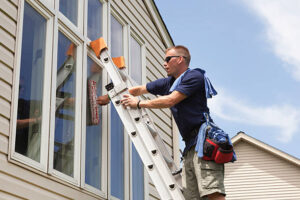
Opening a window after cleaning with bleach is an important part of the cleaning process. It helps to protect you, your family, and any visitors from exposure to hazardous fumes. Cleaning services also use this technique to ensure that their clients’ homes are safe and free of dangerous chemicals.
The purpose of opening a window after using bleach is to allow the fumes created by the chemical reaction between the bleach and other cleaning products, such as laundry detergent or washing machine cleaner, to escape out of the room. Doing this will make sure that no one in the home is exposed to these hazardous fumes. It also prevents any unpleasant odors from lingering in the house.
Once all traces of bleach have been removed from surfaces, it’s important to open a window for at least 15 minutes in order for fresh air to enter and circulate throughout the room. This ensures that any lingering fumes are eliminated before anyone re-enters the area. After 15 minutes have passed, you can close the window and be confident that your home is safe for everyone inside.
How Can You Ensure Proper Ventilation After Using Bleach?
When using bleach, it’s important to ensure proper ventilation. The best way to do this is by opening a window after cleaning with the chemical. However, there are other ways to ensure good air circulation when using bleach. For example, if you are pressure washing your home’s exterior with a cleaning solution that contains bleach, then it’s important to keep the area well-ventilated in order to prevent any fumes from collecting and lingering in the air.
If you are cleaning your washing machine with a mixture of bleach and detergent, then you should leave the door open after use. This will allow fresh air to enter and circulate through the machine, ensuring that no hazardous fumes remain inside afterward. You can also turn on a fan in the room while cleaning your washing machine in order to direct any lingering odors outside of your home.
When done correctly, ventilation can help reduce potential health risks associated with using bleach for cleaning. To ensure maximum safety, always keep windows open for at least 15 minutes after using any type of cleaner containing bleach, and make sure that there is adequate airflow while using such products indoors or outdoors. Doing this will protect you and your family from any dangerous fumes created during the cleaning process.
Benefits Of Keeping Windows Open During And After Cleaning With Bleach
The benefits of keeping windows open while using bleach go beyond just providing adequate ventilation. Keeping the windows open during and after cleaning with bleach will also help to prevent the buildup of moisture and mildew in your home. This is because the fresh air will help to evaporate any excess moisture that may have been created as a result of the cleaning process. Additionally, it will help to reduce any pungent odors from the bleach, which can be overwhelming and unpleasant if allowed to linger indoors.
Moreover, proper ventilation when using bleach can help to prevent any potential health risks that may be associated with breathing in its fumes. Keeping windows open while using bleach will ensure that no dangerous chemicals or particles remain in the air for a prolonged period of time, thus protecting you and your family from potentially hazardous exposure.
Overall, ensuring proper ventilation when using bleach is an important step for keeping your home clean and safe. By opening windows before, during and after cleaning with the chemical, you can help to circulate fresh air throughout your home while reducing any lingering odors or fumes from accumulating indoors. Doing this will not only benefit your health but also improve the overall cleanliness of your living environment.
Safety Precautions To Take When Cleaning With Bleach
In addition to ensuring proper ventilation when cleaning with bleach, there are also a few safety precautions that should be taken. First and foremost, it is important to wear protective gear such as gloves, long sleeves, and eyewear when handling the chemical. This will help to minimize any potential contact with the skin and eyes, which can cause irritation or burning sensations. It is also a good idea to keep children and pets away from areas where bleach is being used in order to prevent any accidental ingestion or contact with the chemical.
Furthermore, it is important to never mix bleach with other harsh chemicals such as ammonia or vinegar, as this can create hazardous fumes that can be potentially harmful if breathed in. Additionally, one should always make sure that the area being cleaned is well-ventilated before introducing bleach into the environment; this will help to reduce any strong odors while also preventing any dangerous fumes from accumulating indoors.
Overall, taking these safety precautions when cleaning with bleach can help protect both you and your family from any potential health risks associated with its use. By wearing protective gear and keeping windows open during and after using the chemical, you can ensure that your home remains safe while still being properly cleaned and sanitized according to your needs.
Prevention Tips For Avoiding Unhealthy Fumes From Household Cleaners
It is important to take precautions when using household cleaners, such as bleach, to avoid any potential health risks. Fortunately, there are a few prevention tips that can help ensure your safety and the safety of your family while also avoiding unhealthy fumes from these products.
Firstly, always read the label of any cleaner carefully before use and follow all manufacturer instructions closely. This will help prevent any potential accidents or misuse of the product which could lead to hazardous fumes being released into the air. Additionally, it is important to open windows and turn on exhaust fans whenever possible during and after cleaning with harsh chemicals. This will help reduce any strong odors while also allowing fresh air to circulate in order to prevent hazardous fumes from accumulating indoors.
Finally, it is beneficial to be aware of any signs or symptoms that may indicate you have been exposed to harmful fumes. Some common signs include burning eyes, coughing or difficulty breathing, dizziness or nausea. If these symptoms occur after using a cleaner, it is important to leave the area immediately and seek medical attention if necessary. Taking these steps can help minimize your risk of exposure to unhealthy fumes from household cleaners.
Methods For Maximizing Airflow In Your Home
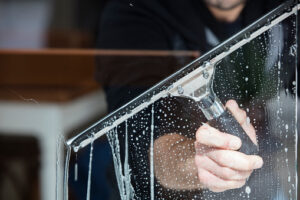
In addition to taking preventive measures when using household cleaners, maximizing airflow in your home can also help reduce the risk of unhealthy fumes accumulating indoors. Good ventilation and circulation are essential for maintaining a healthy indoor environment, so there are several methods you can use to optimize the level of airflow in your home.
One way to increase the amount of air circulating throughout your house is by opening windows regularly. Opening windows allows fresh air to flow in while allowing any built-up odors or fumes to be released. This helps keep your indoor air clean and prevent unhealthy pollutants from accumulating. Additionally, installing exhaust fans in bathrooms and kitchens can help draw out moisture and odors before they have a chance to build up inside your home.
Using ceiling fans is another great way to improve ventilation in your home. Ceiling fans can help create a steady breeze throughout the house which helps move stale air out of closed rooms while bringing in clean, fresh air from other areas. Utilizing these methods can not only help keep your indoor air healthy but also make it easier for you to keep track of how long you should leave windows open after cleaning with bleach or other strong household cleaners.
Guidelines For Determining How Long To Keep Windows Open
Once you’ve finished cleaning with bleach, it’s important to determine how long you should keep your windows open for. To help ensure the health and safety of your indoor environment, there are some helpful guidelines you can follow.
The first step is to assess the size of the room you have been cleaning in. If it is a smaller space, such as a bathroom or closet, then it should be safe to close the windows after 15 minutes or so. However, if it is a larger area like a living room or kitchen then you may want to keep the windows open for up to an hour or more. This will help ensure that any harmful fumes produced by the cleaner are completely cleared out and all traces of bleach are eliminated.
It’s also important to consider the weather when determining how long to leave your windows open. If it is hot outside, then closing them sooner may be beneficial since air conditioning can help keep temperatures in your home comfortable while simultaneously filtering out pollutants from inside. On colder days, however, leaving them open longer might be necessary since cold air will not do much to reduce indoor odors and airborne contaminants.
By taking these factors into consideration, you can easily establish an appropriate timeframe for opening and closing your windows following cleaning activities with bleach or other strong household cleaners. Doing so will help ensure that your indoor air remains healthy and safe for all family members and guests.
Limitations Of Using Bleach As A Disinfectant
Although bleach is widely used for disinfecting surfaces and killing germs, it does come with some limitations. One of the primary concerns is that prolonged exposure to bleach can be harmful to humans. Inhalation of fumes from bleach or contact with skin or eyes can cause irritation and other health issues. Therefore, it’s important to always use bleach in a well-ventilated area, wear protective clothing and gloves when handling, and keep windows open for an adequate length of time after use.
Bleach is also not effective against all types of bacteria and viruses. For example, norovirus and Clostridium difficile are resistant to the disinfecting properties of bleach. Additionally, some inorganic materials like glass, concrete, stainless steel, and plastic may not be adequately sanitized by using bleach alone. Therefore, a combination of cleaning agents may be necessary for complete disinfection.
Finally, it’s essential to understand the potential risks associated with using bleach before incorporating it into your cleaning routine. By doing so you can help ensure that your home remains safe and healthy while still reaping the benefits of using this powerful cleaner.
Risks Associated With Leaving Windows Open Too Long
Despite the effectiveness of bleach as a disinfectant, there are potential risks associated with leaving windows open for too long after using it. First, prolonged exposure to bleach fumes can be irritating to the eyes and lungs, leading to health issues such as coughing, wheezing, and watery eyes. Additionally, if windows are left open for an extended period of time in areas where pollen levels are high, this could lead to allergies and other respiratory conditions.
Moreover, leaving windows open can increase the risk of break-ins since burglars may be able to access the property more easily. Additionally, insects and other pests can enter through open windows and cause damage or spread germs around the home. Finally, letting outside air in may cause energy bills to rise due to an increase in heating or cooling costs.
Therefore, it is important that people use caution when cleaning with bleach and only keep windows open for as long as necessary. This will help ensure that both your health and security remain intact while still allowing you to reap the benefits of using this effective cleaner.
Strategies For Reducing The Impact Of Blended Chemical Fragrances And Odors
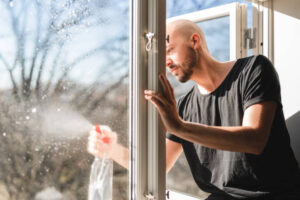
One way to reduce the impact of blended chemical fragrances and odors when using bleach is to open windows for a short period of time after cleaning. This can help to air out the area and reduce the concentration of potentially harmful fumes. It is recommended that individuals wait at least 15 minutes before closing the windows again, although this may vary depending on factors such as the size of the room, ventilation levels, and temperature. Keeping windows slightly cracked while closed may also be beneficial in helping to reduce any lingering odors.
Another strategy for reducing exposure to blended chemical fragrances and odors is wearing protective gear such as gloves, masks, and eye protection when working with bleach. This will help to protect against accidental inhalation or contact with skin or eyes. Additionally, using natural cleaners or products containing essential oils can provide a refreshing scent without relying on harsh chemicals. Finally, taking regular breaks while cleaning can give your body an opportunity to recover from any potential effects of exposure.
By following these strategies, individuals can ensure that they are mitigating their risk of adverse reactions while still enjoying the benefits of cleanliness and freshness provided by bleach products.
Considerations For People With Allergies Or Asthma Symptoms When Cleaning With Bleach
It is important for individuals with allergies or asthma to take extra precautions when cleaning with bleach. People with allergies should avoid using bleach-based products if possible, and those with asthma should consult a healthcare professional before doing so. In either case, it is important to ensure that the space being cleaned is well-ventilated and that any protective gear such as gloves and masks is worn. Additionally, it’s best to limit the amount of time spent in the area while cleaning, as this will help reduce potential exposure to the fumes.
When using a bleach-based product, it might be helpful to leave windows open longer than usual after cleaning. This will help disperse any lingering chemicals more quickly, thus reducing potential exposure. It may also be beneficial to use natural cleaners or essential oils instead of harsh chemical fragrances for a more inviting scent. Furthermore, individuals can use an air purifier or dehumidifier in the room after residential window cleaning Denver with bleach to further reduce the concentration of airborne particles from the product.
For people with allergies or asthma, taking these preventative measures can help keep symptoms at bay and ensure that they are not exposed to hazardous chemicals while keeping their surroundings clean and fresh.
Advantages And Disadvantages Of Disinfectants Other Than Bleach
In addition to bleach, there are a variety of other disinfectants that can be used for cleaning and sanitizing purposes. These products come with their own advantages and disadvantages, so it’s important to do your research before choosing the right one. For example, some disinfectants may contain fewer chemicals than bleach but may take longer to kill germs. On the other hand, some may be more effective against certain types of bacteria but may not be as good at removing dirt and debris from surfaces.
When it comes to convenience, using a disinfectant other than bleach can often be more efficient due to their ease of use. Many of these products are available in ready-to-use sprays or wipes which make them ideal for quick cleanups. They also typically require less time to work since they don’t have to sit on surfaces as long as bleach does. Furthermore, many of these products are non-toxic and environmentally friendly, making them safer for people with allergies or asthma who might have difficulty breathing around harsh chemical fumes.
It is important to note however that while many disinfectants can help reduce the spread of germs and bacteria, they should always be used in conjunction with proper hygiene practices such as regular handwashing and cleaning surfaces frequently. Ultimately, selecting the best product for your needs will depend on factors such as effectiveness, convenience, and safety measures such as ventilation when using strong chemicals.
Alternatives To Keeping Windows Open After Cleaning With Bleach
While keeping windows open after cleaning with bleach can help to reduce the buildup of fumes and odors, there are other alternatives that can provide a similar effect. Ventilation systems such as fans, air purifiers, and dehumidifiers can be used to help circulate air within the space while also filtering out any airborne contaminants. Additionally, certain plants have natural air-purifying properties that can help absorb impurities and pollutants in the environment.
Opening a window is not always an option either due to weather conditions or safety concerns. In these cases, using natural essential oils such as lavender or lemon can provide a pleasant scent while also helping to reduce any chemical odors in the area. There are also non-toxic aerosol sprays available that contain odor-neutralizing compounds which quickly break down harmful gases and fumes in the air.
No matter what solution you choose, it is important to remember that proper ventilation is key for removing fumes from a room or space. Taking steps to ensure good airflow will help create a healthier environment for everyone in the home or workplace.
Appropriate Protective Gear When Working With Bleaching Agents
When working with bleaching agents, it is important to take the necessary safety precautions to protect yourself and those around you. As bleach is a highly corrosive and toxic substance, wearing appropriate protective gear such as gloves, goggles, and a face mask is essential. Additionally, it’s important to work in well-ventilated areas to reduce the risk of inhaling any fumes or odors.
It is also wise to keep children and pets away from any area being cleaned with bleach. While bleach is effective at killing germs, it can also cause skin irritation if not used carefully. To avoid this, make sure that all surfaces are thoroughly rinsed after window cleaning Denver with bleach and avoid direct contact with your skin or eyes.
Finally, always read the safety instructions on the label of any chemicals you use before beginning a cleaning job. Following these steps will help ensure that everyone in your home or workplace stays safe and healthy while you clean up.
What Are The Best Practices For Safely Handling And Storing Bleach Products?
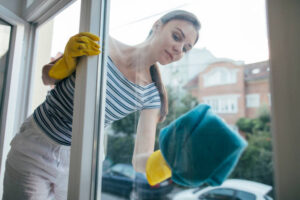
When it comes to safely handling and storing bleach products, there are a few best practices that need to be followed. First and foremost, it is important to ensure that all containers of bleach are labeled properly. This will help you identify the product quickly and easily when needed. Additionally, make sure that these containers are kept in a secure area away from any children or pets, as even small amounts can cause serious harm if ingested or inhaled.
It is also important to keep in mind how long to keep a window open after cleaning with bleach. Generally, it is recommended to leave the windows open for at least 15 minutes after use in order to allow any fumes or odors to dissipate before closing them again. Additionally, it’s best practice to always wear gloves when handling bleach and wash your hands immediately afterward.
Finally, make sure that any containers of bleach are stored out of direct sunlight and away from sources of heat like radiators or stoves in order to protect its effectiveness over time. Taking these steps will help ensure that bleach is handled safely and disposed of properly when no longer needed.
Conclusion
In conclusion, it is important to understand the risks associated with using bleach as a household cleaner and to take appropriate safety precautions. Opening a window after residential window cleaning Denver with bleach can help to ensure proper ventilation and reduce the risk of exposure to unhealthy fumes. However, this may not always be possible or practical and so alternative methods of preventing unhealthy fumes from forming should be considered such as using protective gear when working with bleaching agents, or substituting bleach for other disinfectants. Lastly, proper handling and storage of bleach products should also be taken into consideration in order to minimize the potential for accidents. By following these best practices, individuals can feel confident that they are taking appropriate steps towards creating a clean and safe environment for their family.
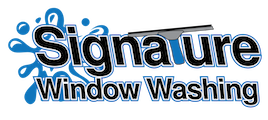
Recent Comments